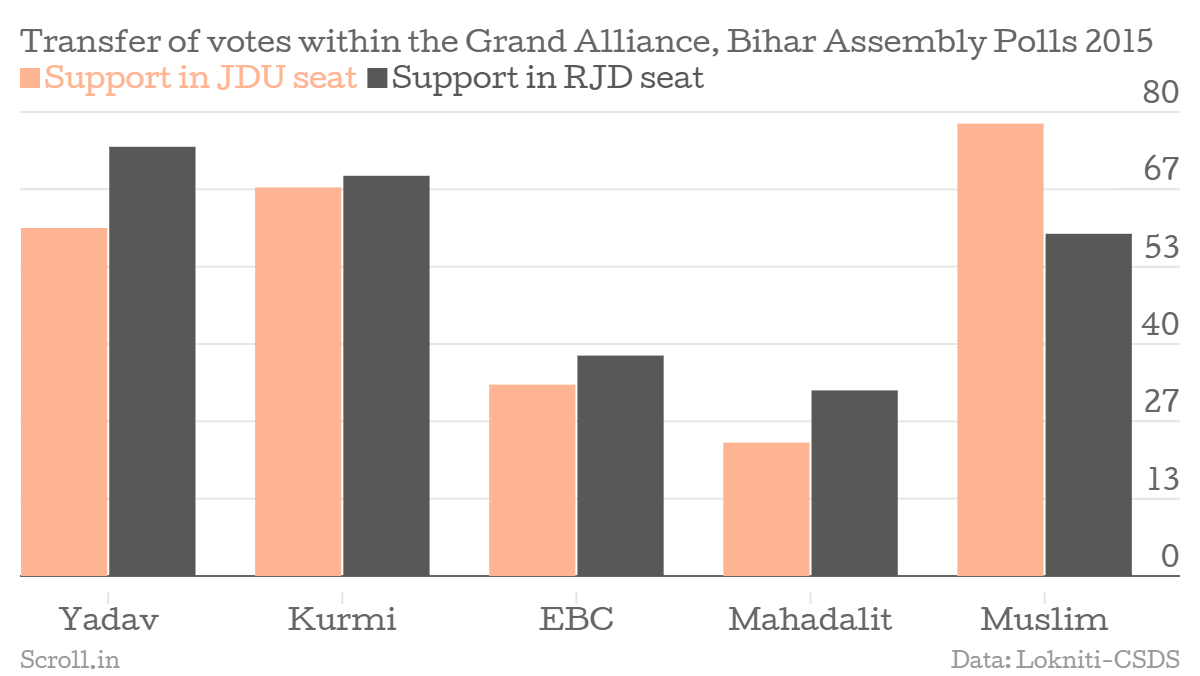This has upended a lot of stock analyses of how Indian voters are aspirational and would prefer development over a party like Lalu's RJD, which is steeped in caste-based politics. It has also raised the possibility that, since the RJD has more seats than the JD(U), it will struggle to take control of the alliance despite Kumar's pre-eminent position. The Bihari voter's preference for the RJD, in this analysis, means that they are effectively asking for a return to Yadav's infamous Jungle Raj.
But could it have been Nitish success as an alliance leader that actually led to this somewhat unusual situation?
A post-poll survey by Lokniti-CSDS, published in the Indian Express, suggests that the RJD's big numbers are, to a large extent, the result of strong opposition unity managing to sway traditional supporters of Nitish more than it did Lalu's.
In other words, Nitish successfully got his voters to vote for RJD candidates, while Lalu didn't quite manage to transfer as many votes to the JD(U). As a result, the Grand Alliance was wildly successful in seats contested by the RJD, with slightly lower strike rates everywhere else.

The first two measures on the chart are key: Yadav voters are traditionally considered supporters of Lalu Prasad Yadav, who comes from the community, while Nitish Kumar's Kurmis tend to swing behind him. Thus, nearly three out of four Yadav voters chose the RJD in seats where it was contesting, while that number comes all the way down to 60% in JD(U) seats. Kurmis, however, showed almost the same preference for the JD(U) (67%) as they did for the RJD (69%), suggesting there was no drop off simply because it wasn't Nitish's party on the ballot.
"Thus, Nitish was much more effective in transferring his core base to the RJD than Lalu was in transferring his to the JD(U)," write Sanjay Kumar and Shreyas Sardesai of the CSDS in the Indian Express. "The RJD also netted a greated share of the votes of the extremely backward."
Only with the Muslims is this trend upended, with much more consolidation in favour of the JD(U). Although this alone can't be pinpointed as the reason that the RJD ended up with more seats in the assembly than the JD(U), the fact that Nitish's voter base successfully transferred to the RJD was a crucial part of ensuring the Grand Alliance's success.












